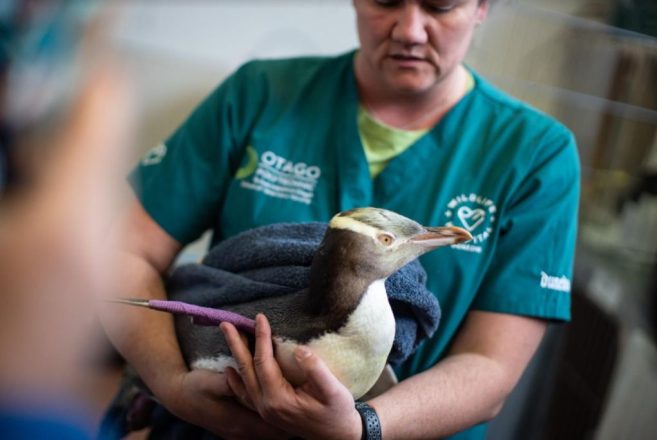Ang kumpetisyon ng Bird of the Year ngayong taon ay nakakakuha ng pansin sa internasyonal, kasama ang kritikal na nanganganib na Hoiho (Yellow-Eyed Penguin) ang sentro stage. Sa 131 pares lamang ng pag-aanak ang natitira sa continental ng New Zealand, ang Hoiho ay nahaharap sa maraming mga banta mula sa aktibidad ng tao at pagbabago ng klima, na ginagawang pangunahing priyoridad ang kanilang kaligtasan para sa mga konserbasyonista.
Ang mga populasyon ng Hoiho ay malubhang naapektuhan ng pagkawasak ng tirahan, pagkagamot, at mga banta sa dagat tulad ng polusyon at labis na panging Ang mga penguin na ito, na madalas na tinatawag na “sea sentinels,” ay mga pangunahing tagapagpahiwatig ng kalusugan ng ecosystem ng dagat, ngunit lumaki ang kanilang kahinaan dahil sa pinagsama-samang epekto ng mga banta na ito.
Ang mga pagsisikap upang iligtas ang Hoiho ay pinamumunuan ng mga organisasyong Dunedin tulad ng Yellow-Eyed Penguin Trust, Dunedin’s Wildlife Hospital, at OPERA. Kasama sa kanilang trabaho ang makabagong pananaliksik, rehabilitasyon, at pagpapanumbalik sa kapaligiran, kasama ang Wildlife Hospital kamakailan ay nagdiriwang ng unang mundo sa pagbubuo at pag-angat ng mga itlog ng Hoiho.
Ang kampanya upang iligtas ang Hoiho ay nakakuha ng suporta mula sa mga pandaigdigang pigura tulad ni Dr. Jane Goodall at dating Punong Ministro ng New Zealand na si Helen Clark. Dalawang araw lamang ang natitira sa kumpetisyon sa Bird of the Year, nangunguna ang Hoiho, ngunit malapit pa rin ang karera, na nagbibigay-diin sa kagyat ng protektahan ang ikonikong species na ito bago huli na.


















































-360x245.jpg)









